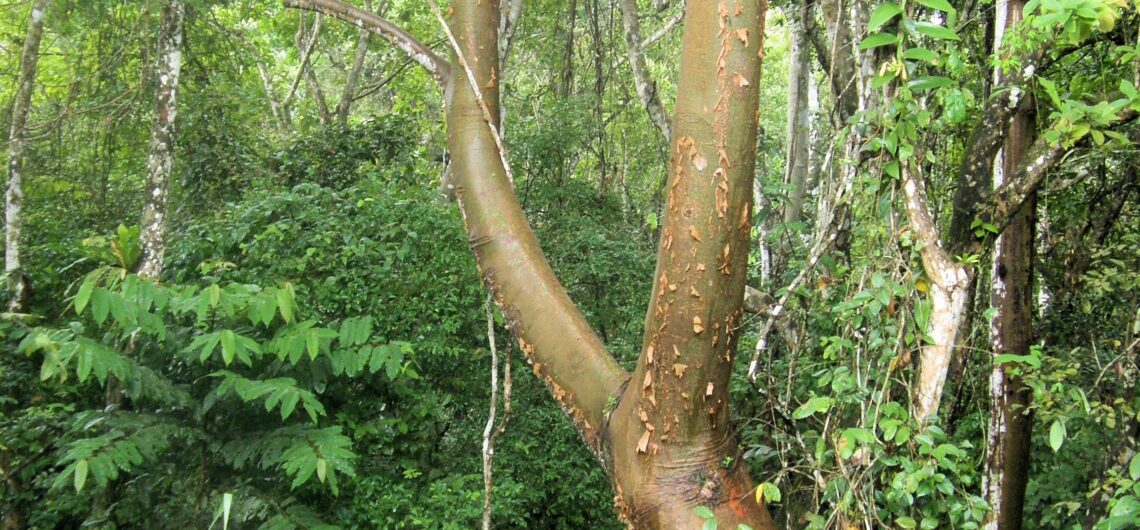Gumbo Limbo Tree
Bursera simaruba
The Gumbo Limbo tree is one of the most recognizable trees of the American tropics—often called the “tourist tree” because of its characteristic peeling red bark, reminiscent of a sunburnt tourist! This medium-sized tree grows to 30 meters tall and has a diameter of 1 meter or less. The leaves are pinnate with 7-11 leaflets and are arranged in spirals. The fruits are small, 3-valved capsules which encase one small seed covered in a red fatty seed coat (aril).
The Gumbo Limbo is an important food source for many resident and migrant species of birds, as well as monkeys and squirrels, who feed on the aril. Gumbo Limbo is a very useful tree; its wood is suitable for light construction and firewood, and the resin is used as glue, varnish and incense. Anti-inflammatory properties in its leaves, bark and resin can be used to treat a variety of aches and pains. The resin is used as a treatment for gout. The bark is used as a common topical remedy for a variety of skin conditions including sores, measles, sunburn and insect bites, and a decoction can be taken internally to cure pain, cold and flu, fever and sunstroke. Furthermore, this tree is considered one of the most wind-resistant species and can act as a good wind barrier to protect crops and roads, and is commonly planted in hurricane zones.
Gumbo Limbo trees grow in a wide variety of habitats from south Florida through Mexico, Central America, the Caribbean, to Brazil and Venezuela, and is common in the lowlands of central Panama around the Canopy Family lodges.
Cool Fact! The wood of the Gumbo Limbo tree was the traditional wood used to make carousel horses in the United States before plastic became popular.

